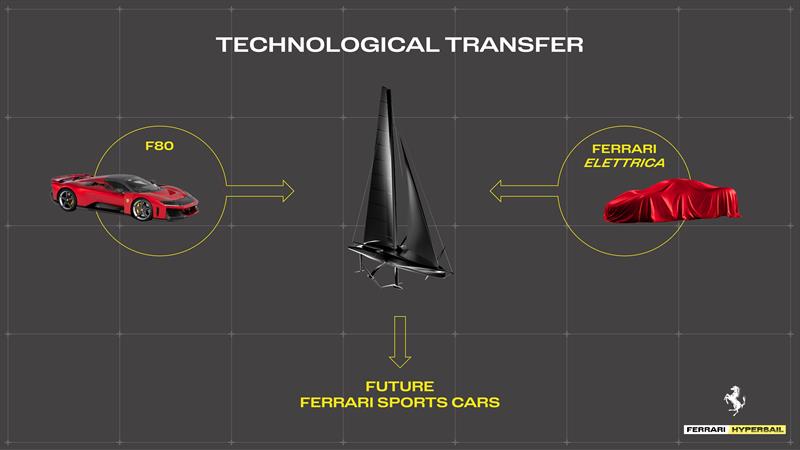
Ferrari Hypersail: Innovative Energy Solutions and Technology Transfer from Sports Cars to Sailing
by Ferrari Hypersail 10 Oct 23:07 NZDT

Technological Transfer from Sports Cars to Sailing © Ferrari Hypersail
During the Technology and Innovation Workshop dedicated to the presentation of the components of the first Ferrari elettrica, the Hypersail team unveiled a preview of the technologies for energy management on the boat developed under the direction of Team Principal Giovanni Soldini.
The uniqueness of the Hypersail project is based on the bidirectional technological transfer from the sports cars to the nautical sector, with many of the solutions adopted on-board deriving from the experience gained in the production of hybrid vehicles and the first Ferrari elettrica.
As previously announced, the flying monohull developed by Ferrari will be completely self-sufficient from an energy standpoint and will be able to power all onboard systems exclusively through renewable energy sources.
This ambitious project, led by Ferrari's engineering team, has brought to the filing of numerous patents and the development of technologies never before applied to the nautical sector, innovations that could potentially be integrated into Ferrari's sports cars in the future.
Among the most significant technical innovations is the integration of the rear axle developed for the Ferrari elettrica, capable of providing the power needed to generate hydraulic pressures to operate the cylinders, sails, foils, keel, and related flaps. Completing the system, two DC-DC modules (800V-48V-12V), designed for the Ferrari F80, optimize the management and distribution of energy on board, ensuring maximum efficiency and reliability even under the most extreme operating conditions.
The entire electrical and electronic architecture has been designed to maximize energy flows while minimizing dispersion, thanks to the use of advanced control algorithms.
In line with methodologies used in the automotive world, the Hypersail project is based on a development process that starts with virtual design through simulation, leading up to the creation of dedicated test benches, with the aim of anticipating potential technical issues and reducing system debugging times.